Bonifacio foreshadows the age of Duterte

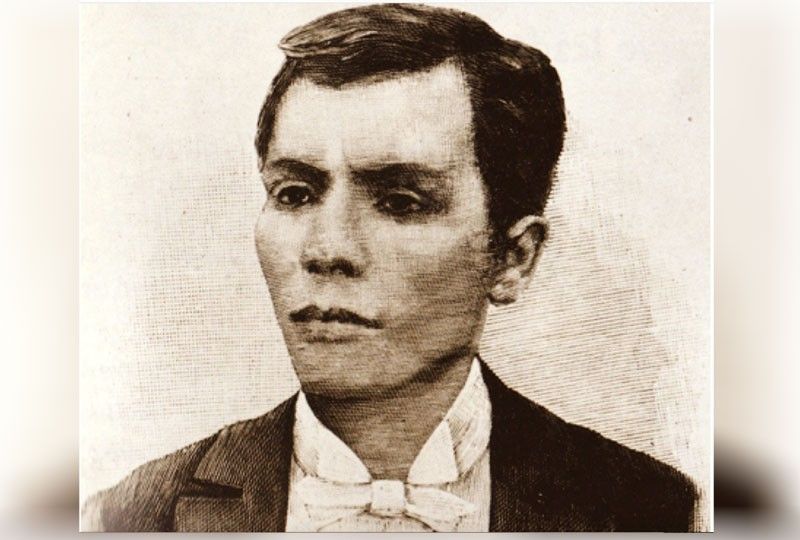
A startling Bonifacio document reveals that the Katipunan had secret plans of extending its reach to Mindanao. It is proof positive not only of the KKK’s visionary ideals but also its intent to become a truly nationwide and not just a Tagalog organization.
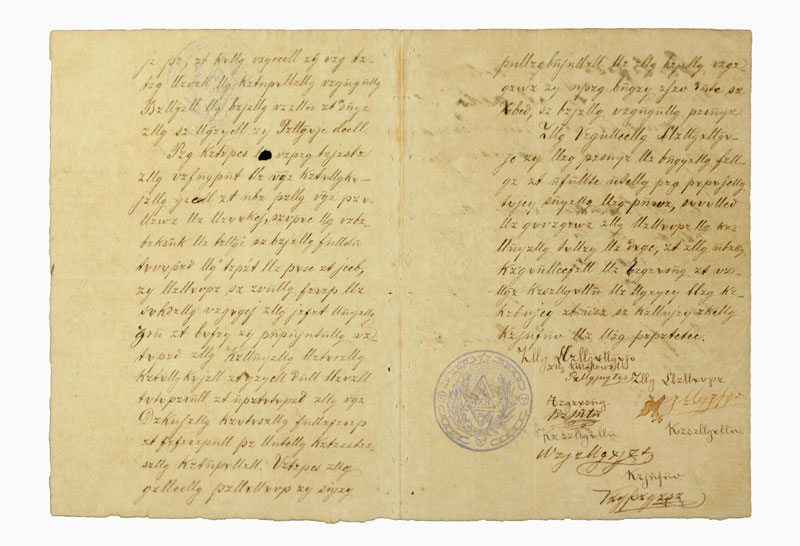
Foreshadowing the current Age of Davao, it was written and signed by Andres Bonifacio in September 1892 or just two short months after the KKK was established. This extraordinary document is one of the highlights of the León Gallery Kingly Treasures Auction which coincides with Bonifacio’s 156th birthday on Nov. 30.
In it, Restituto Javier (code name “Mangahas”) is authorized to organize Katipunan “triangles” of membership in Mindanao. He has accepted his assignment under oath and signed the paper in his own blood.
Javier has been described by scholar Jim Richardson as the son of a Tondo property owner. He worked in Fressel & Co., the German-owned cement, brick and tile company where Bonifacio also worked as a warehouseman.
It is possible, he noted, that Javier was going to Mindanao in connection with his work, and Bonifacio intended to take the opportunity to spread the Katipunan’s cause.
Could Javier therefore have become the 19th-century Duterte? It would indeed have been a tantalizing prospect had a man from the South joined the power struggle between Bonifacio and another of his recruits, Emilio Aguinaldo.
Bonifacio penned the assignment papers in his capacity as secretary of the Katipunan’s highest ruling body in 1892, then known as “Ubod” (or Center), which pre-dated the better-known Supreme Council.
They were once in the collection of eminent scholar Don Epifanio de los Santos, after whom Manila’s main artery is named. This is the first time that the general public will be able to read the letter in its entirety.
Apart from the founding statements and statutes, this appointment is the earliest Katipunan document yet known. It is certainly the only one still in the Philippines and in private hands. The other key foundational documents are in the Spanish Military Archives in Madrid.
Another remarkable highlight of León Gallery’s November auction is an extremely rare Katipunan blood oath. The blood oath was the cornerstone of the organization of the secret society. Members were required to go through a grueling initiation rite that combined Masonic symbolisms and probing questions on the history of the Philippines, culminating in a compact of allegiance to the Katipunan signed in blood.
This document is therefore an exceedingly historically important fragment of the Philippine Revolution of 1896 and our beginnings as a nation as well as a testament to the determination and courage of the Filipino.
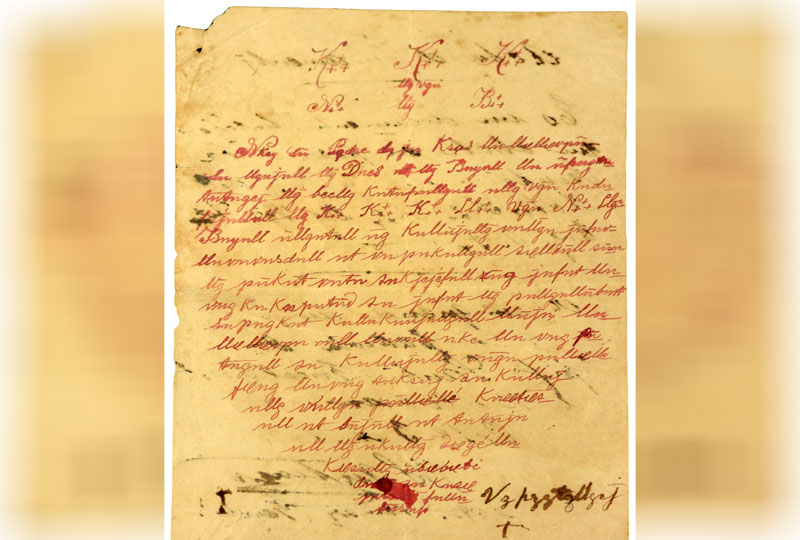
Written in a strong, firm and educated hand in the secret code of the KKK, it is penned in red ink and is signed in blood by a certain Pedro de la Cruz, using his KKK alias “Mapagtangol,” (using the old Tagalog spelling with a single “G”).
As a result of the turmoil and tragedy of the Philippine Revolution of 1896, only two such handwritten oaths are known to have survived and exist today.
Other historically important relics from the Philippine Revolution include a battle map of the first three days after the Cry of Pugad Lawin, indicating Filipino and Spanish troop movements in the Caloocan and Balintawak area. It is a rare representation of the places sacred to our history.
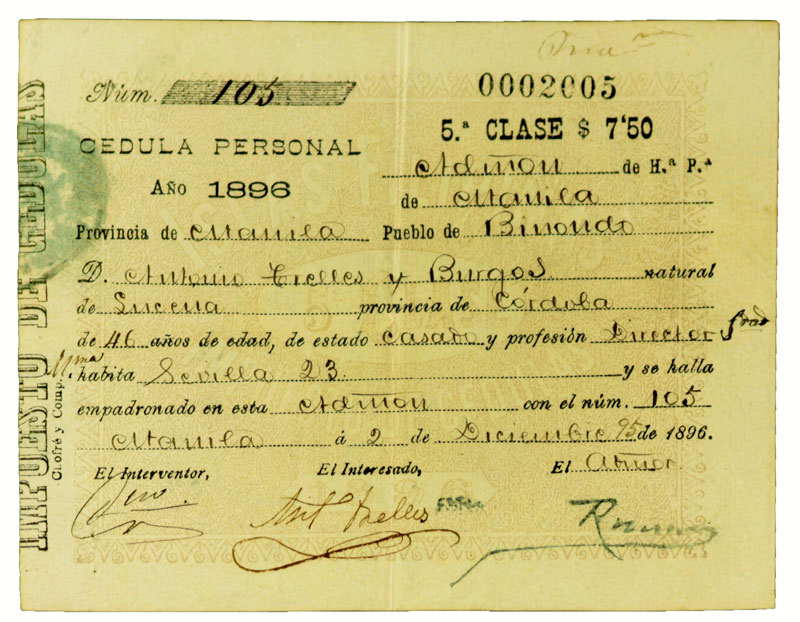
Included in a single lot are several cedulas personales from 1896, the kind and type that were torn up at that famous start of the Revolution. The cedula personal was proof of payment of a singularly onerous tax on every Filipino man, woman and child. This scrap of paper was part passport, part national ID, part police clearance. To enroll in schools, travel away from one’s hometown, deposit or withdraw money from banks, start a business, practice one’s profession, or even enter any government office, the cedula personal would have to be presented. Failure to produce it led to arrest and imprisonment. The cedula was ultimately a heavy yoke that all Filipinos would have to bear. As Bonifacio led the first Katipuneros to tear up their documents, that act was symbolic of their desire to throw off Spanish oppression at any cost.
Finally, a dramatic eyewitness portrayal of the execution of José Rizal by the titan Jorge Pineda rounds out the historical lots that are a much-awaited feature of León Gallery auctions.
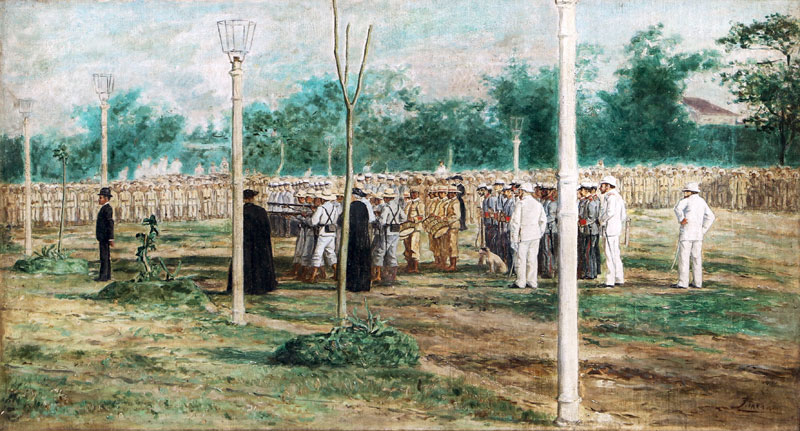
That dark day on Dec. 30, 1896 was one of the dire consequences of the Philippine Revolution, as the “First Filipino” was frog-marched to his death on the killing fields of the Luneta. The riveting masterpiece includes the appearance of a pale dog that was said to have run in circles around the hero’s dead body, “barking and whimpering.” It is painted beside the Spanish infantry men arrayed behind him, just minutes before Rizal was shot by firing squad. Indeed, it would bode the end of the Spanish empire in the Philippines.


















